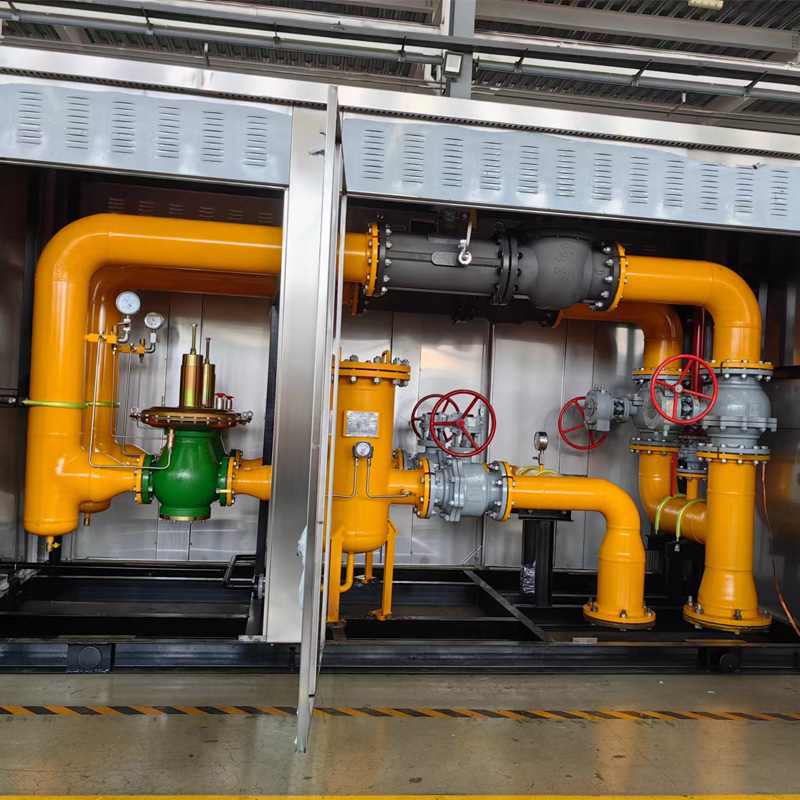
Dec . 02, 2024 00:09
Back to list
safety relief valve
Understanding Safety Relief Valves Essential Components for Pressure Management
Safety relief valves are critical devices in various industries, designed to protect pressurized systems from over-pressurization and potential catastrophic failures. These devices play a fundamental role in ensuring the safety and reliability of equipment such as boilers, gas tanks, and chemical processing plants. In this article, we will delve into the key aspects of safety relief valves, including their function, types, operation principles, and importance in industrial applications.
What is a Safety Relief Valve?
A safety relief valve is a mechanical device that automatically releases excess pressure from a pressurized system. Its primary purpose is to prevent pressure buildup that can exceed the system's design limits, thus averting possible explosions or structural failures. When the pressure reaches a predetermined set point, the valve opens to allow fluid—liquid or gas—to escape safely, thereby reducing the pressure within the system.
Types of Safety Relief Valves
There are several types of safety relief valves, each with specific applications and functions
1. Spring-Loaded Valves The most common type, spring-loaded valves operate using a spring mechanism. When the system pressure exceeds the set pressure, the force of the fluid overcomes the spring force, causing the valve to open.
2. Pilot-Operated Valves These valves utilize a smaller pilot valve that operates under the same principle as a spring-loaded valve but can handle larger flow rates. The pilot valve controls the opening and closing of the main valve, providing precise regulation of the pressure.
3. Balanced Valves Designed to reduce the effect of back pressure on the valve's performance, balanced valves are particularly useful in systems where fluctuating pressures can hinder the operation of traditional safety valves.
Operating Principles
The operation of safety relief valves is governed by a few fundamental principles. The valve consists of a body, a seat, a disc, and a spring mechanism. The spring is calibrated to a specific pressure, which determines the valve's set point. When the pressure inside the system exceeds this set point, the force exerted by the fluid pushes against the valve disc, causing the valve to lift off its seat. As the valve opens, fluid is released, and the pressure in the system decreases. Once the pressure falls below the set point, the spring force returns the valve to its closed position, preventing any further fluid escape.
safety relief valve

Importance in Industrial Applications
The importance of safety relief valves in industrial applications cannot be overstated
1. Preventing Explosions Over-pressurization can lead to catastrophic failures, including explosions. Safety relief valves are the first line of defense in preventing such incidents.
2. Ensuring Compliance Regulatory agencies impose strict guidelines regarding the use of safety devices in various industries. Properly functioning safety relief valves help companies comply with these regulations, avoiding legal penalties and ensuring operational safety.
3. Equipment Protection The cost of replacing damaged equipment due to overpressure incidents can be significant. Safety relief valves protect investments by mitigating risks associated with excessive pressure, thereby prolonging the lifespan of machinery.
4. Maintaining Process Efficiency Fluctuations in pressure can impact process efficiency and product quality. Safety relief valves help maintain consistent operational conditions, ensuring efficient production processes.
Maintenance and Testing
To ensure the reliability and effectiveness of safety relief valves, regular maintenance and testing are crucial. It is essential to check for signs of wear, corrosion, or damage, which can affect the valve's performance. Routine testing should be performed to verify that the valve opens at the correct set pressure and closes tightly afterward.
Conclusion
Safety relief valves are indispensable components in maintaining safety and efficiency in pressurized systems. Their ability to prevent over-pressurization not only safeguards personnel and equipment but also promotes compliance with industry regulations. Understanding the mechanics and importance of these valves is vital for engineers, safety professionals, and operators in ensuring the integrity and safety of industrial operations. As technology advances, the design and functionality of safety relief valves continue to evolve, further enhancing their critical role in pressure management across various industries.
Latest news
-
Safety Valve Spring-Loaded Design Overpressure ProtectionNewsJul.25,2025
-
Precision Voltage Regulator AC5 Accuracy Grade PerformanceNewsJul.25,2025
-
Natural Gas Pressure Regulating Skid Industrial Pipeline ApplicationsNewsJul.25,2025
-
Natural Gas Filter Stainless Steel Mesh Element DesignNewsJul.25,2025
-
Gas Pressure Regulator Valve Direct-Acting Spring-Loaded DesignNewsJul.25,2025
-
Decompression Equipment Multi-Stage Heat Exchange System DesignNewsJul.25,2025

